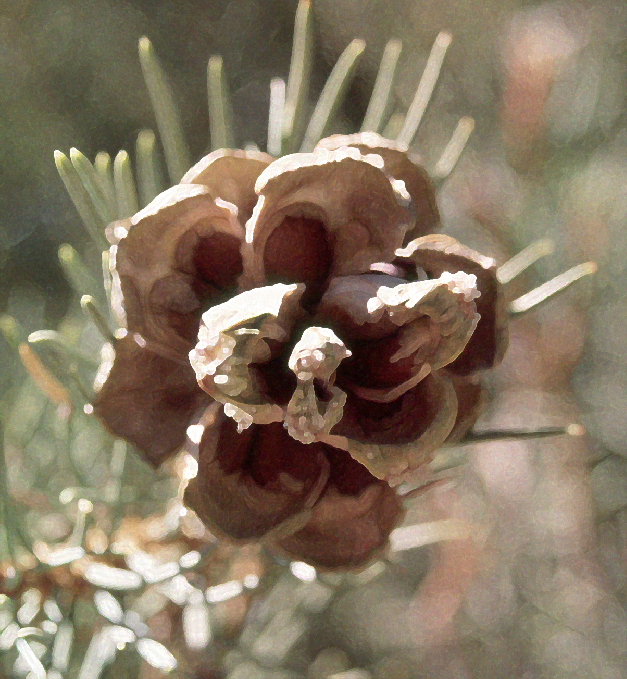John Muir wrote of the pinyon tree and nut harvest in The Mountains of California, first published in 1894:
This is undoubtedly the most important food-tree in the Sierra, and furnishes the Mono, Carson and Walker River Indians with more and better nuts than all the other species taken together…When the crop is ripe, the Indians make ready the long beating poles; bags, baskets, mats and sacks are collected; the women out at service among the settlers washing or drudging, assemble at the family huts; the men leave their ranch work; old and young, all are mounted on ponies and start in great glee to the nut lands…the cones are readily beaten off with poles, and the nuts procured by roasting them until the scales open. In bountiful seasons a single Indian will gather thirty or forty bushels [240 to 320 dry gallons] of them…the kernels are white, becoming brown by roasting, and are sweet to every palate…

In the 1960s Margaret M. Wheat gathered traditional stories and songs, and took photos of many traditional activities, publishing them in Survival Arts of the Primitive Paiutes (1967). She included accounts of the pinyon harvest and associated ceremonies:
Then they dug a pit, and in it built a fire large enough to heat the bottom and the rim of dirt around it. One Indian remained close to camp during the day to tend the fire, while the others collected a few baskets of immature cones which had not yet opened.
When the gatherers returned with their cones at midday, they removed the live coals from the pit, which by then was very hot. Dumping in the cones, they pushed the hot earth back over the nuts and built another fire on top…After a few hours of roasting, the green cones were opened and the nuts laboriously removed…
When the party had gathered enough nuts for everyone in camp, it returned from the hills carrying a small tree “to show what they were dancing for”—and the formal ceremony began…The Paiute Indians believed that great power lay in song and dancing, so this was one of their ways of praying. They believed that if they danced the pine nut dance, the rains would come and the nuts would not dry up.
The Paiute continue many of their traditions today, and the pinyon harvest and associated ceremonies remain an important part of Paiute identity.